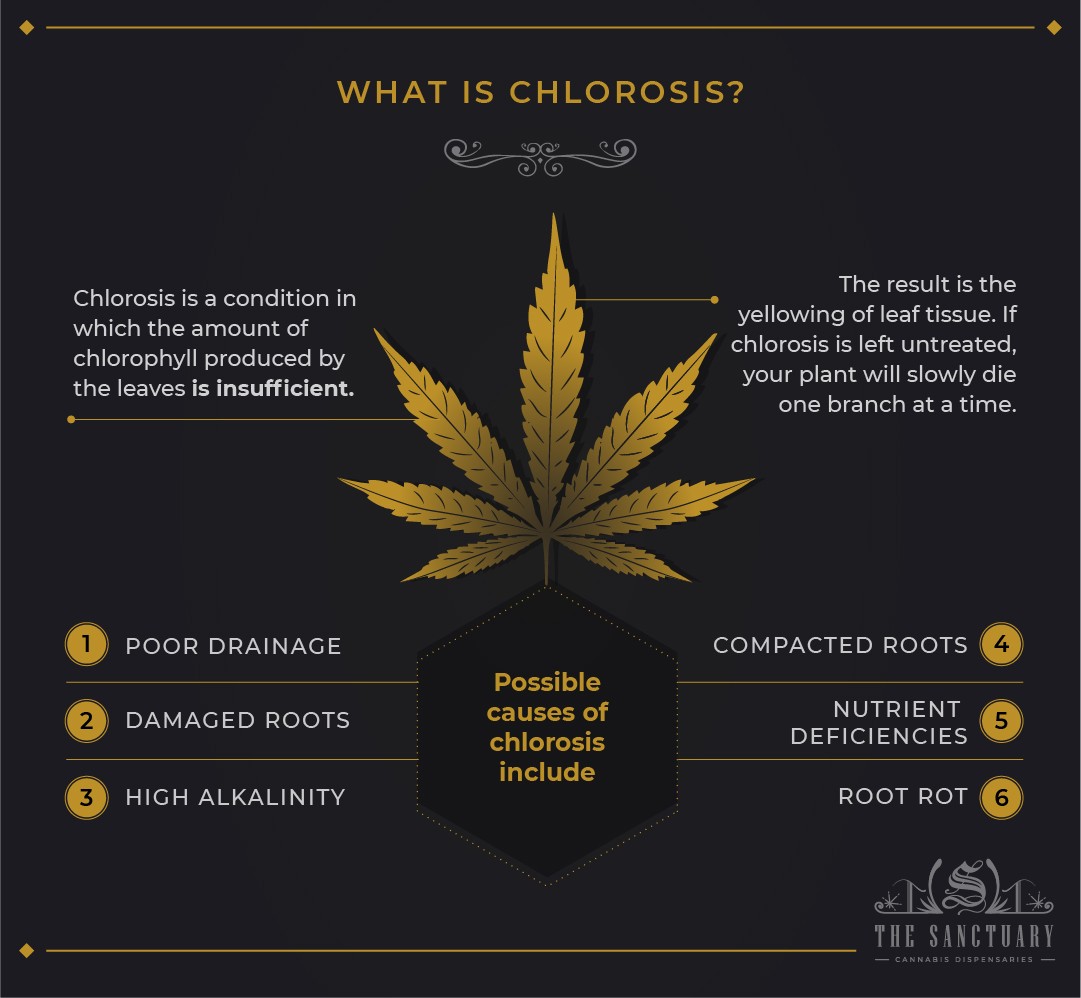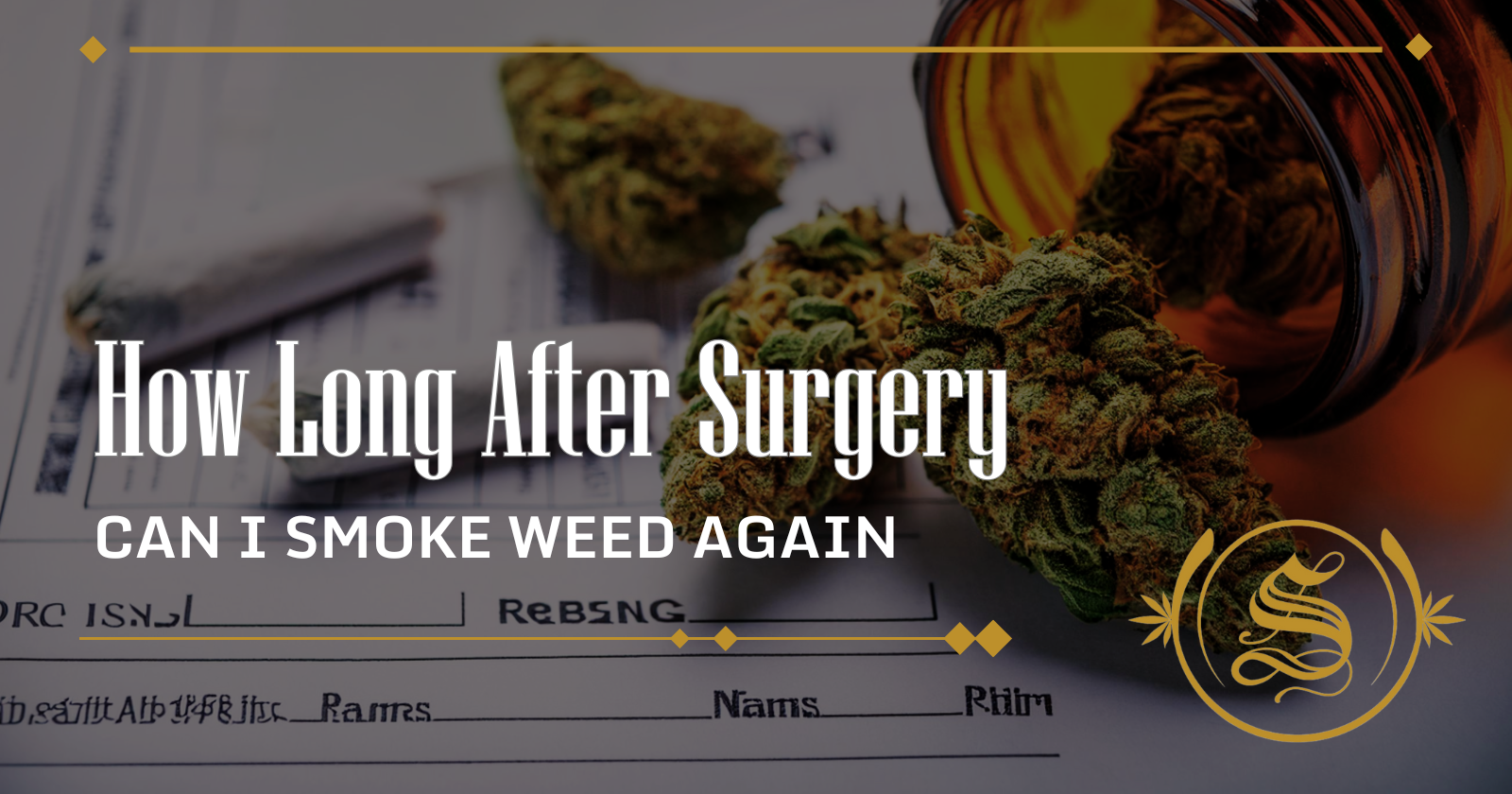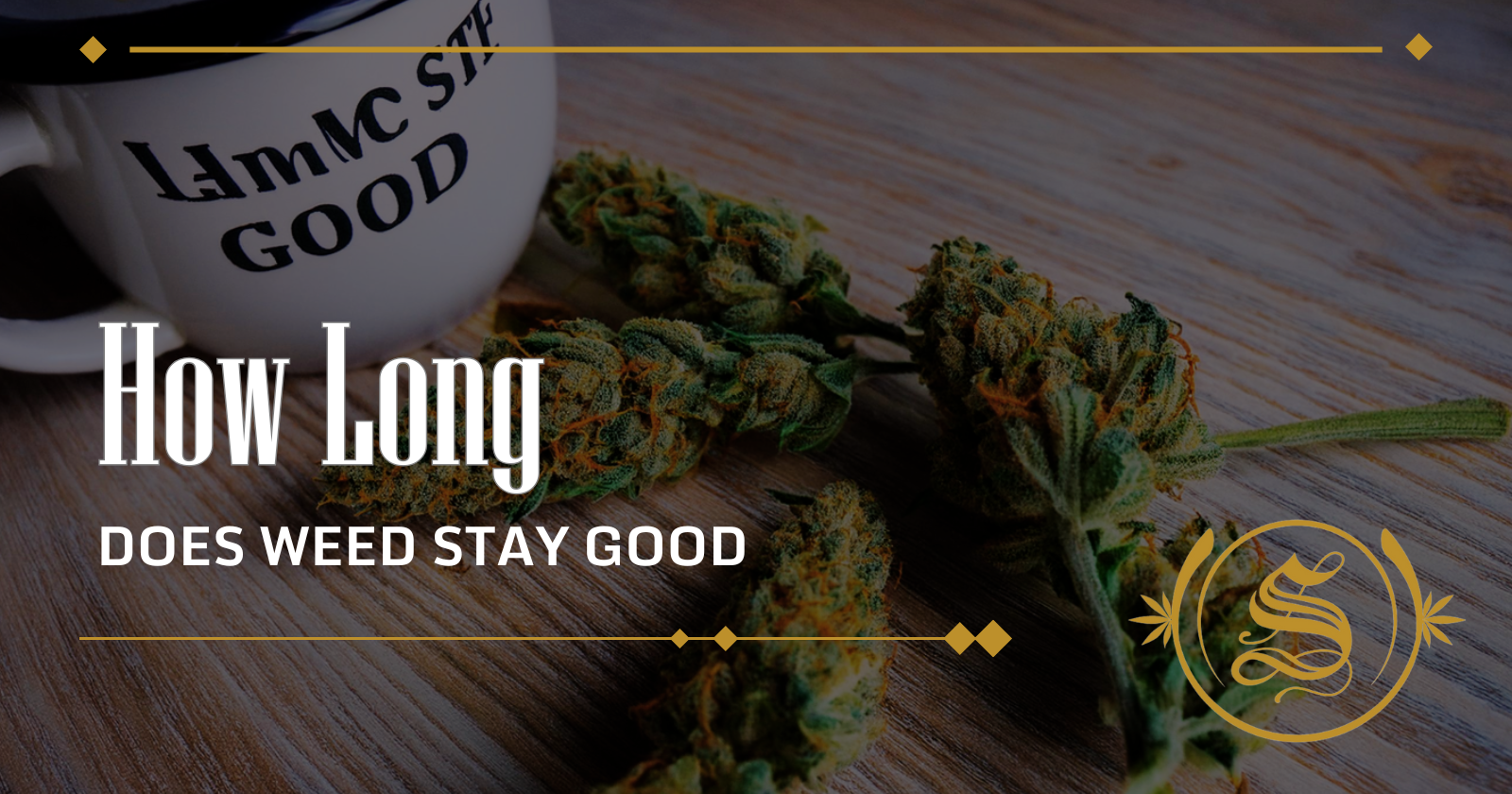Iftikhar Alam
Author
Reviewed by Cannabis Experts
Published on: February 1, 2022 | Updated on: September 10, 2024
Even when you take exceptional care of your cannabis plants, things might go wrong in your weed garden. Even the most seasoned cannabis growers might run into issues from time to time, and yellow leaves are generally the first symptom of a problem.
A cannabis plant will and should lose some pigmentation towards the end of its life cycle. During the last weeks of flowering, growers should not be concerned about yellowing leaves on the lowest half of the plant. On the other hand, if the yellowing occurs during the vegetative stage or during the first few weeks of flowering, then your plant is suffering from chlorosis.
Chlorosis, or leaf yellowing, can be induced by a variety of factors. Fortunately, there is no need to be concerned. Photosynthesis can often be hampered by something simple. You can usually assist your plant’s recovery without trouble if you act promptly. This is why growers must understand the origins of their problems and possible solutions.
What is chlorosis?
Chlorosis is a condition in which the amount of chlorophyll produced by the leaves is insufficient; the result is the yellowing of leaf tissue. If chlorosis is left untreated, your plant will slowly die one branch at a time.

Possible causes of chlorosis include:
- Poor drainage
- Compacted roots
- Damaged roots
- Nutrient deficiencies
- High alkalinity
- Root rot
Check your soil
Whether you are growing in soil, hydroponics, or coco coir, the pH around the roots might be either too high or too low if yellowing occurs on the leaves of the plant. If the pH level is off, cannabis plants have a hard time absorbing nutrients, resulting in nutritional deficits even when the nutrients are available near the roots.
Even if growers start with a great, natural source of soil and purified water, not maintaining a proper pH level can leave your plant prone to nutritional deficiencies.
How to test the pH of your soil at home
When an acidic solution is mixed with something basic, it usually reacts. As a result, you may use vinegar (acidic) and baking soda (basic) to determine the pH of your soil quickly. This test will reveal the general soil composition.
Here are the steps to test your soil easily with basic supplies:
- Obtain a soil sample: To get a soil sample, dig 4 to 6 inches below the surface of your garden with a hand shovel.
- Clean the soil: Clear the soil of stones, sticks, and other debris. Any huge clusters should be broken apart.
- Combine water and soil: Fill a clean glass container with about 1 cup of dirt and add enough water to make the soil into mud.
- Add some vinegar: Stir a 1/2 cup of vinegar into the mixture. Your soil is alkaline if it bubbles, foams, or fizzes.
- Repeat process if no bubbling occurs: Take a soil sample, clean it of debris, place it into a clean container, and turn it into mud.
- Add some baking soda: Stir in 1/2 cup of baking soda. Your soil is acidic if it bubbles, foams, or fizzes.
You can detect which end of the pH scale your soil is leaning by testing it with vinegar and baking soda. A soil pH testing kit, on the other hand, is the way to go for precise measurement. Testing kits are available at most garden stores and local cooperative extension offices.
Nitrogen deficiency
A nitrogen deficit in your plant is one of the most typical reasons for weed leaves to turn yellow. Even if you are not sure if this is the source of your problem, it is a good place to start, even if it is only to rule it out before moving on to other possibilities.
A nitrogen deficiency can be caused by a number of factors. It is possible that your plant has absorbed all of the nitrogen you have given it. If you are growing your plants in pots and have not moved them from their original container, this is quite likely.
In non-soil mediums, a deficiency might emerge if the grower fails to apply nutrients on an appropriate schedule. Natural nutrients are not present in non-soil mediums such as hydroponics and coco coir.
Solution:
If you have not been giving your plants nutrients on a regular basis, do so immediately away and feed them the necessary amount. If you are feeding your soil-based plants properly, you could wish to move them to a new container with fresh soil.
You could avoid transferring them by adding nutrients to the water instead, but if this does not work, you will need to relocate them. It is critical to take action as soon as you recognize a nitrogen deficiency. If left untreated, it might lead to plant death. Even if your plant does not die, its growth may get stymied, resulting in a not-so-stunning harvest later.
Magnesium deficiency
The yellowing occurs between the veins of the leaves when there is a magnesium deficiency, but the veins remain green. This is usually found at the bottom of the plant. The most common cause of magnesium deficiency is an imbalanced pH.
If you only notice these symptoms on a few leaves at the bottom of the plant that are no longer getting any light, it is perfectly normal and nothing to be worried about. If leaves go days or weeks without light, the plant finally “gives up,” which usually happens to the lowest leaves as the plant becomes larger. The leaves will appear drooping, limp, and exhausted if this is the case.
There should only be a cause for concern if yellowing occurs on leaves that are still receiving light, or if you see the symptoms on a large number of leaves rather than just a few.
Solution:
Check the pH first. If you are growing in soil then you want a pH of 6.0-7.0. Growers using non-soil mediums should aim for a pH of 5.5-6.5. If you have a magnesium deficit, consider using a CaliMagic plant-based supplement.
Temperature problems
The yellowing of cannabis leaves can also be caused by extreme temperatures. Excessive heat can influence the development of cannabis plants. A cold period throughout the night might also harm your plants if you are growing them outside or in the basement.
The leaves of weed plants that are subjected to heat stress frequently become yellow and dry up. Cold shocks (around 50 degrees Fahrenheit), on the other hand, cause the leaves to droop and turn yellow. Temperature extremes can quickly damage your cannabis plants.
Solution:
If you grow your plants indoors, hold your hand in between a light and the affected plant to gauge the heat impact onto the plant. If the light is too hot on the surface of the plant, raise it higher and away from the plants. For outdoor grows, monitor the temperatures outside. If the temperature is over 85 degrees Fahrenheit during the day and below 60 degrees Fahrenheit at night, the plant may turn yellow from stress.
If you are using grow containers, make sure they are lifted off the ground since low temperatures can kill them overnight if they are placed straight on the concrete floor. If your plants are outside, you may keep them warm by covering their roots at night.
Poor watering practices
Chlorosis may be caused by both over and under-watering cannabis plants. Watering, surprisingly, can be a difficult thing to do precisely. You must water your crop in the correct amount and at the appropriate times.
Too much water can deplete the oxygen supply in the soil, starving the root system and resulting in death. Your plants’ leaves will be bloated, drooping, and maybe yellow if you have over-watered them.
Because most growers are acutely aware that their crop may perish if it is not thoroughly hydrated, under-watering is less common. However, under-watering does occur, and plants that are under-watered may seem fragile, thin, brittle, and yellow.
Solution:
The remedy is simple: cease watering over-watered plants and increase irrigation of under-watered crops. Get a sense of how dense the growth medium is when it is dry and when it is wet. You may also buy a hygrometer to get a better idea of how much water is in your soil.
Light burn
The leaves closest to the light or at the top of the plant will display the first indications of light burn. It is easy to confuse light burn with nitrogen deficiency. A key distinguishing feature is that leaves lacking in nitrogen become yellow and fall off, but those with light burn do not wilt and do not fall off unless plucked.
Another distinction between these two issues is that yellowing with nitrogen shortage occurs at the bottom of the plant, whereas light burn occurs at the top. The most common cause of light burn is when the grow lamp is placed too close to the plant.
Keep your hand under the light at canopy level and observe whether it causes any irritation or discomfort on your skin with this simple hand test. This problem is specific to indoor grows.
Solution:
Make adjustments to your grow environment, such as moving the lights away from the damaged plant. If you are growing in a small location and do not have enough vertical room to change your lights, use plant training techniques like low-stress training or topping to increase the distance from the light and keep your canopy equal.
If the problem is caught early enough, your plant will recover or show symptoms of recovery in about a week or two.
Inefficient lighting
Photosynthesis is the process through which leaves absorb light and carbon dioxide (CO2) and transform it into plant energy. Leaves will turn yellow if there is not enough light, and growth will come to a halt.
Not all light bulbs are made equal so do your research before using any old bulb to light your indoor plants. Outdoor plants will suffer if they sit in shady areas for most of their life cycle.
Solution:
Increase the quantity of light available to the plant. This may entail lowering an existing grow lamp to the right height over your plants’ canopy or purchasing a more effective light such as an LED. For growing weed plants outside, plant them in a nice sunny spot. If it is too late for that, then consider putting some reflective surfaces around it to absorb as much available light as possible.
Pest infestations
You know your plant has had some unwanted guests if you observe yellowing, blotches, or little holes on the leaves. Fungus gnats, which form as a result of overwatering and feed on the roots, are the most prevalent pest to cause yellow leaves.
Solution:
To prevent the gnats from laying eggs in the soil, limit watering as much as possible (without negatively affecting the health of your plant). Finally, to get rid of them, use natural pesticides such as diatomaceous earth or neem oil.
Septoria leaf spot
Septoria leaf spot is a common fungal disease that causes yellow cannabis leaves. This disease also causes black patches on the leaves of various plant species, including cannabis, tomatoes, and parsley. These spots quickly spread from leaf to leaf as the illness spreads, causing yellowing, dark patches, and wilting.
Septoria leaf spot is most common in the early stages of flowering. If left untreated, this disease can kill your precious plants. Excessive damage to a cannabis plant’s fan leaves, which are used for photosynthesis, might result in stunted growth and diminished harvests.
Solution:
First and foremost, you must eliminate the contaminated leaves. Clean your pruning scissors and remove any leaves that show indications of septoria leaf spot with care. Removing diseased fan leaves will assist to prevent the spread of the infection, but using a neem oil foliar spray to conclude the treatment will help to remove any non-visible residues of the pathogen.
To prevent this disease from returning after treating your plants, you should adjust a few environmental conditions. Improve air circulation around diseased plants first. If your growing environment tends to become overly damp, install fans and a dehumidifier.
Move your pots to higher ground outside to expose plants to the breeze. Make sure your plants’ bases are clean. To prevent spores from making their way into the soil, remove any dead leaves that may be harboring spores and cover them with a fresh layer of mulch.
The content provided on this blog is for informational purposes only and does not constitute medical, legal, or professional advice. Cannabis use is subject to local laws and regulations, which vary widely by jurisdiction. Always consult with a healthcare professional before starting any new treatment or altering an existing treatment regimen. The authors and publishers of this blog are not responsible for any actions taken based on the information provided herein. Use cannabis responsibly and in accordance with applicable laws. This blog is intended for adults aged 21 and over. The Sanctuary Dispensaries D186, D187.








